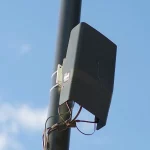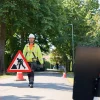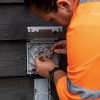Openreach Brings FTTP Broadband Cover to 50 Percent of UK Premises

The latest independent data from Thinkbroadband has revealed that the footprint of Openreach’s (BT) national Fibre-to-the-Premises (FTTP) network, which currently offers broadband speeds of up to 1.8Gbps to ISPs and their customers, has just passed the 50% of UK premises (16,328,469 ready for service) milestone.
Openreach are currently investing up to £15bn to expand the coverage of their new full fibre network to reach 25 million UK premises by December 2026 (here), which includes around 6.2 million premises in rural or semi-rural areas. On top of that, they’ve also expressed an ambition to reach up to 30 million by 2030, although this will partly depend upon a favourable outcome from Ofcom’s next Telecoms Access Review 2026 (TAR).
The new research highlights that the latest figure of 16.32m is up from 12.34m premises exactly one year ago (2023), as well as 8.98m in 2022 and 5.89m in 2021. In term’s of the country-by-country breakdown, this means that Openreach’s full fibre network currently reaches around 49.04% of premises in England (this includes c.300k from KCOM), 63.38% in Wales, 46.73% in Scotland and a whopping 88.99% of Northern Ireland.
Advertisement
However, Openreach’s official figure is likely to be much closer to 17 million premises (RFS) than this, which is down to the laborious process of checking that Thinkbroadband needs to do in order to ensure the accuracy of its data (i.e. they’re often a month or so behind the operator’s latest build).
The new service, once live, can be ordered via various ISPs, such as BT, Sky Broadband, TalkTalk, Vodafone and many more (Openreach FTTP ISP Choices) – it is not currently an automatic upgrade, although some ISPs (e.g. TalkTalk) have started to do free automatic upgrades as older copper-based services and lines are slowly withdrawn.
Mark is a professional technology writer, IT consultant and computer engineer from Dorset (England), he also founded ISPreview in 1999 and enjoys analysing the latest telecoms and broadband developments. Find me on X (Twitter), Mastodon, Facebook, BlueSky, Threads.net and Linkedin.
« Ofcom UK Propose Tweak to 3.9GHz Band for Mobile and Wireless Broadband






















































Hats off to Openreach – a sustained build rate of 4 million properties per year is amazing. And they are pretty much on target to hit 25m by Dec 2026.
Of course, given current take-up of 35%, there are still millions of installation visits required to move the remaining end user connections over from copper to fibre. That’ll keep the engineers busy for a few more years yet.
Strip out the effect of new builds (less than 2 years old) and the take up rate is 50% plus.
Still wish I had it. It said live for me last week, but lasted 4 hours before it was removed back to unplanned. Not sure what happened.
Another year with no FTTP from any provider. The wait continues into 2025…
Same here. I actually had a real Openreach engineer right here the other week (fixing another degradation on the copper line), but he couldn’t tell me when fibre is coming to this area. Somebody must know! What’s odd is that he absolutely refused to believe my assertion that full fibre is >70% now. He just didn’t think it was possible! The stats say 73% now…
In my experience it’s not that much better than virgin or fttc. I’m on the 900 download package and it’s very poor in the evenings and weekends. Struggle to watch prime video in 1080p and it can’t sustain ultra HD for more than 5 minutes without dropping the quality down to HD. Tried multiple firesticks and switched cables and none of that made a difference.
Automatic upgrade: I renewed my contract with BT/EE in August of this year and was advised that I would be automatically upgraded to FTTP once the service is available. However, they have still not published a start date for the roll-out of FTTP in this part of London – one of the worst areas for FTTP coverage.
at least there is community fibre and others in london for full fibre, so other choices
My build date is December 2026 yet everywhere around me has full fibre I don’t get it.
This is decent at least I just hope they don’t slow down or cancel it let’s get it to 100%..
Unless they throw more resources at it the rate of build and the targets will slide as the low hanging fruit supply dwindles and they are only left with the more mundane (not the odd headline grabbing) expensive/slower to do areas (such as Direct In Ground).
Direct in Ground is truly the elephant in the room. I had no idea how prevalent it is until I worked for an altnet. It’s why they gave up at 50% coverage in one town.